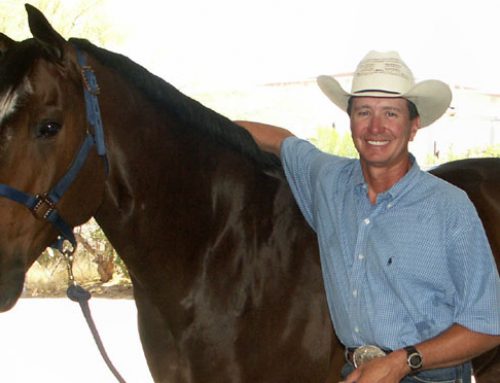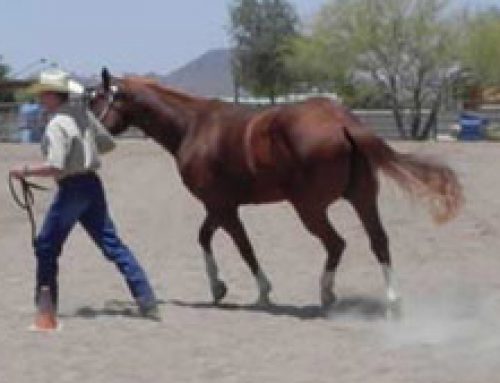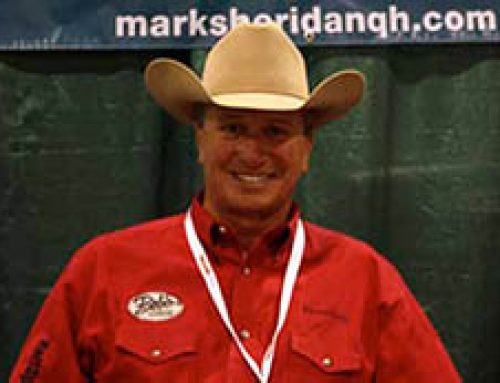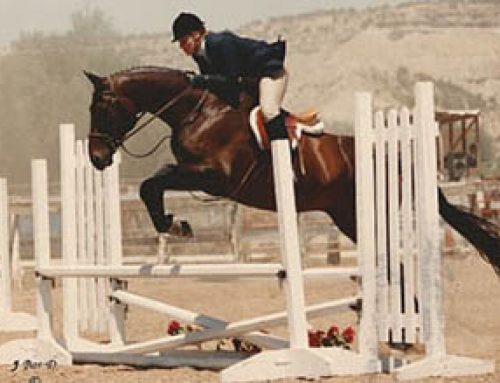THOUGHTFUL IDEAS ON HOW TO RAISE YOUR SCORES, AND HELP SHOWS RUN MORE EFFICIENTLY AT THE SAME TIME.
As I write this article, I am going to hit on a large variety of topics that pop into my head while I am judging, and also exhibiting at both the smaller and larger horse shows. I want to start by stating that these are my opinions, which are also shared by a large majority of other judges that I work with, and do not represent the opinions of any breed or show association. Horse shows are supposed to be fun, and if some shows go late into the night or early hours of the morning, the fun stops. Many of the horse shows I judge or exhibit at are adding more and more classes, such as the popularity of Ranch Horse, Walk Trot classes, and are leveling the classes which takes up more time for the events, and to announce the winners as well. There are only so many hours in a day, and to keep things rolling, it takes additional effort not only from show staff, arena crews, judges, etc…but from the exhibitors as well. I would also like to hit on other areas, such as trends, proper horse care and ways to increase your productivity in the arena. As a judge, coach and exhibitor, I am always trying ways to help out with the shows and keep them moving smoothly, such as help with setting up cones for the Western Riding, assisting in Trail issues, helping mark the arena for Cowhorse events, making sure the barrier works in the Roping events, etc… This all takes time. I also want to touch on ways for all exhibitors, but especially for the Rookie and Novice people, to give them advice that will advance their success in the show arena that will help them to avoid making the common mistakes.
TIP NUMBER ONE: Get into the Arena when called for! This might be the biggest issue for horse shows going so long into the night. At most shows, when one class is finished, the gate person will call for the next class to enter the arena and either stand on the rail or work at will for rail classes. We understand that there are conflicts with other arenas, and tack changes happen all the time. However if is just one arena, and you don’t have a tack change, you should be in the arena for two huge reasons. Number one, to keep the show moving along efficiently, and secondly and more importantly for the exhibitor, is that we as judges get a longer time to see you. Your time for us to judge you is limited, why not take advantage of the fact that most judges start evaluating horses before the class officially starts! If a Hunter Under Saddle class has fifteen horses trotting around the arena and we are waiting for one or two horses because the trainer told them not to go in yet, than the late ones in are not going to get the same time for evaluation, mostly because the others have been trotting around for quite a while. Showing courage to get in the arena first is a very good thing! Being ready at the gate and wanting to be the first one in regardless if there is a work order shows bravery, and most judges like that. I am not personally a fan of work orders because they can sometimes slow down the rhythm of the show. I understand the need for it in most cases, and if the gate person wants you to go in a particular order, than that is what you have to do. However if there is not a working order, be brave and go first. Challenge all the other riders to watch you and try to beat your pattern or score! If you’re not brave, then fake it! However, always do what the gate person says to do, if you don’t, we will most likely hear about it. Another point that I have mentioned in numerous articles is to be at the cone or starting point and go when called for. If multiple judges are working, and one says to go,…..go! Do not wait for all three or four judges to nod to you. Most of the time, there is a judge or steward that is the starter judge. I tell my clients that when all their hats are up and looking, to go. If there is a work order, listen for it and watch your competition to see what you need to do to beat their score.
TIP NUMBER TWO: At many of the larger shows, the Trail, Western Riding, and Reining classes will go in a block. This is where four or five classes show in a particular block, or where all the Western Riding, Trail, or Reining can show all day when it is convenient for them due to the large shows and the conflicts involved with other arenas and events. There is a fallacy amongst many trainers and exhibitors alike,…..mostly because their trainers taught them this particular falsehood. That is the fact that judges tend to “warm up” their scores as the day goes on, and that we have “colder scores” at the beginning of the class or early in the day, and by the end of the day, the scores warm up and are higher, so to speak. First of all, with todays scoring methods, that is not the case at all. Secondly, when the block starts at 8:00 am, most judges have had a good nights sleep, breakfast, and coffee and are fresh and ready to go. At the end of the day, after we have been waiting for sometimes hours without any exhibitors, the line of exhibitors gets huge, and then it is hot or cold out, we have been sitting in plastic chairs all day in a dusty arena, we are tired, hungry, etc… If anything, the scores would obviously be higher in the morning if those factors were to be in play. However, trust me in the fact that horses are scored accordingly to their performance, and not what time of day it is, or how many we have judged. I will say that I have heard from many judges over the years that they appreciated how I was at the gate with all my Western Riding horses and clients, and we would do all our runs and be finished by 8;30 or so. I do this because I want to get done early, didn’t want to wait in line later, knew that the judges are fresh and ready to go, and most importantly the fact that most horses ride better in the morning because that is when they are used to being ridden and trained. Horses get testy, tired and hungry just like us. Why not show them early in the day if given the opportunity?
TIP NUMBER THREE: This is a tip regarding the All Day Fees. This is where you can show for one fee, which sometimes includes your stall and shavings, and enter as many classes as you like for one low price. This is a good way for shows to attract more exhibitors and keep the points up in most classes. However, that does not mean to over show your horse to the point where they are exhausted, thinking because the class is somewhat free, that you might as well enter it. First lets think about your horse and how many rides are they capable of giving you, and how many quality rides does a horse have in their career? There are only so many good Reining runs, Western Riding runs, or Rail classes that your horse has in them. At the last few show that offered this type of entry where I officiated, many horses were going in 15 or more classes a day. That is just not smart to show your horse that much and use them up like that. To me, it would be the equivalent of asking your child to compete in six soccer games a day. If you are going to show in the all day fee shows, plan out your schedule the day before and think about your horse, and not just yourself getting to be able to show that much. If you are going to show in quite a few events, then you need to think about taking care of your horse accordingly. Are you unsaddling them during the day to give them a break, or are you just sitting on your horse all day long between classes. Think about sore backs, muscles, and the fact that most show facilities have hard ground outside the arenas that horses stand on all day. Make sure that you get extra shavings, eight bags or more, have plenty of water available, keep feed in front of them so they can eat during the day and not just twice a day. Wrap their legs in the evenings with liniment to keep them more comfortable, and keep fans on them if it is a hot day. Put the welfare of your horse first, and put some thought into your show plans.
TIP NUMBER FOUR: Schooling horses in the arena is sometimes a necessary thing we must all do at sometime. But there are smart ways to school your horse so that they learn from the lesson, or the wrong way, which is letting your temper get the best of you, and then take it out on your horse. If your horse needs schooling, don’t take it personally against them, they don’t reason that way. If they come out of the arena terrorized or afraid, they will only get worse. I usually carry my whistle in my coat pocket during the day, and have unfortunately had to use it at least once a day lately. If your horse needs schooled in the Reining, or Western Riding, think about what areas they need help in the most, and plan out your ride. When you come out of the arena, you should feel good about your horse’s education, and not mad and looking to go out behind the barn and finish the business. If you do that, we will find you. Also, as a courtesy to the judge and ring steward, if your plans are to school, stay on course, don’t go over time limit, and use two hands softly to notify of the school session upon starting. The ring stewards work very hard and sometimes a little mental break for them is appreciated. To follow up on teaching versus punishment, there is a huge difference. Teach, do not punish! If you school during the rail classes, you will most likely be asked to leave or stand in the center of the arena, as to not jeopardize other riders in the arena who are actually competing for a prize. When warming up in the makeup pen before your class, do not abuse or knock your horse around, most warm up pens are adjacent to the show arenas, and it is amazing what we can see!
TIP NUMBER FIVE: Showing on the rail in both Western and English events is always a big issue and everyone has their opinions about what is right and wrong. Personally, I think that you should show your horse to the best of their ability and not try to make them conform into what you think they should be. If your Western Pleasure horse has a longer stride than others in the class, then don’t shut them down where they look artificial and not to the best of their ability, just because others are slower. Shutting them down to the point that they look undesirable, and loping canted or sideways, or bobbing their heads will not only loose, but will harm them for other events that they might be better suited for to compete in. In the Hunter Under Saddle classes, showing off the rail seems like the thing many are doing to the extreme. I always hear the trainers telling their students to “get off the rail,…get further off the rail”. When this happens, and all the horses are off the rail by 20 ,30 or even 40 feet or more,…..the arena now becomes a very small tiny arena with 17 hand horses all the same color, all riders dressed the same, zooming by the judges just feet away. Trust me, we can’t find you if that happens. When the riders stay “on or near the rail”, the arena becomes very large again, there is plenty of space for everyone and room between riders, and plenty of room for us to evaluate the horses fairly! When it comes to the Rookie and Novice riders, my advice is to try to stay by yourself in the arena and find your own spot where you are not caught up in the pack, or as I call it, “the herd”. If you can delay your upward and downward transitions by just a few seconds or go deeper into the corners, this can go along ways in keeping you by yourself on the rail. Consistency and being seen go a long ways in getting a prize!
TIP NUMBER SIX: Showing your horse with the proper cadence and stride in Trail, Western Riding, Horsemanship, and Equitation is mandatory for success. Proper execution of especially the lope and canter, shows good riding form. The talented riders most always have their horses properly engaged in a true three beat lope or canter. I still see many trail horses loping up to the lope over poles doing a four or five foot stride, then lunging into the six foot stride to get over the poles, and then back to the five foot stride. I also see the Western Riding horses changing leads at the same slow pace, and then lunging into the lead change in order to get a change. If you watch the really good lead changers, the stride never varies from the time they lope off until the time they stop and back. Make sure to find a proper six foot stride after the third stride following lead departures, then keep it all throughout the pattern. The Horsemanship and Equitation riders will sometimes shut their horses down to be able to sit quieter, however proper execution of strides is one of the most important parts of any pattern or rail work. The top riders I judge always seem to have this one thing covered when it comes to cadence, proper stride engagement and connection with their horse.
TIP NUMBER SEVEN: When it comes to showing young horses or getting them ready to go to a show, I feel that the best way to overcome the, “It’s his first show”, issues, is to take them to a schooling show first and just ride them around, tie them up for a couple hours, pony them in the arena during breaks, and do not show them right off the bat. Give them time to adjust being away from home, and this includes Halter Horses as well. They will tell you when they are ready to quiet down and compete. Forcing a young green horse into the show ring before it is time is a huge mistake that I see all the time at almost every show I judge. Take them to a local Roping or Team Penning for some exposure. Horses mature at different rates and the more they see, the faster they will come around mentally when it is time to actually compete. Just because you go to the show, does not mean that you are obligated to show your horse.
TIP NUMBER EIGHT: Always make sure to pay attention to the Judges, Ring Stewards, and gate help. If they ask something of you, they are doing so in order to keep the show running smooth. If you have a question regarding the pattern, or class procedure, feel free to ask any of the three people mentioned above. Realize that judges are always rooting for you to be your best, we are not “political”, and/or trying to set you up. We don’t play favorites, and we are actually on your side and have all been where you are on the other side of the arena. Make sure to do the required gates that judges call for, lengthening the stride at the lope, or extending the jog in Western Pleasure doesn’t mean to pump your hand, bob your head and fake it. Some judges like to help exhibitors quite a bit, if they do give you free advice, take it and appreciate it, even if it contradicts what your trainer says to do. What you do with it later is up to you. Personally I feel like we are paid to judge and not teach, so I don’t give much advice when judging in the arena. I would rather express myself in articles such as this one, or by conducting clinics. However, being a coach, I like to help out the ones that truly need it such as the Rookies and Novices. Do feel free to ask a judge through his ring steward if you have a question that will make you a better rider. But, there are two kinds of people that ask questions, the ones that say,…”Why didn’t you like my horse?”… and then the ones that ask….”What do you suggest that I do better with my horse to improve?”…..Make sure that you are the latter!
TIP NUMBER NINE: It would be hard for me to write an article without mentioning some pet peeves, it is just something that I must do, because they seem to keep popping up all the time. The minute one trend gets squashed, another one or two shows up. I will only go over a few of them now that are maybe the most noticeable to me. I mentioned in past articles regarding hats and the two traditional classes that are off limits to trends and fads. Showmanship and Horsemanship are two of the events that should stay traditional throughout time, and not yield to fads and trends. (A) I like the fancy hats in the reining, team penning, Pleasure to a degree, roping, etc… But not in Showmanship and Horsemanship. To me, it is the equivalent of putting silver on headstalls in the Equitation. You just wouldn’t do it! The Showmanship winners are usually the ones that do not bring the theatrics and the strange way of trotting with their horses. (B) The Bobble Head, as I call it… getting in rhythm with your horse in Trail and Western Riding, just don’t do it! Feel with your butt and legs, not with your head and neck! Keep your head still. (C) The new thing about the spectators whistling on every lead change in Western Riding. It sounds like birds chirping. I think they feel it is influencing us, however according to myself and many other judges, it is extremely annoying and distracting. The Western Riding is not Reining. (D) Extremely loose reins…. Most rule books, including the AQHA rule book says reasonably loose reins, not extremely loose reins. When the loop of the reins are below the knees of the horse, the reins are too long. When the reins are swinging back and forth and crossing, the reins are too long. When the exhibitor backs up their horse in the Trail, Horsemanship, and Western Riding, and their rein hand is neck, chin or higher, the reins are too long. This is basic horsemanship!
TIP NUMBER TEN: When I was just a fifteen or sixteen year old teenager showing youth events in Nebraska back in the seventies, I did not have a trainer, but I had a couple of nice horses, one of them being an own son of Poco Dell out of a Kings Pistol mare. I remember not knowing much but trying to learn as much as possible by watching the pros. I never asked for much help, but I clearly remember trainers coming up to me and offering help. I remember trainers such as Joe Hayes, Bob Loomis, Mike Drennan, Bill Keyser, Gary Campbell, and Jim Wilke, to name a few that offered help to me for nothing in exchange. Maybe they saw something in me, or maybe it was just the Nebraska way of doing things, but I will always remember the advice they gave me! For those who hunger for knowledge, especially the Rookies and Novices, do not be afraid to ask an AQHA Professional Horseman for some help at the shows. I guarantee you that they will help you with any questions you might have. Better yet, go to AQHA.com and look under Professional Horseman for Professionals in your area and take some lessons. My advice is to spend more money on lessons, and less money on entry fees. Do not be intimidated or afraid to ask any Pro for help. We make a living teaching people how to become better Horsemen and Horsewomen. Most of us love to teach and it is why we do what we do!
In summarizing, my goal and purpose in this article is to educate, inspire, and make exhibitors, as well as trainers aware of topics that they might not be aware of. Once again, these are my views and were designed to help and educate, however constructive criticism is always part of the equation. With some of these ideas implemented, shows will also continue to run more efficiently as well. I am always in search of furthering knowledge myself, and if the Rookies and Novices especially, can avoid some of these issues, it should speed up the learning curve dramatically.
~ By Mark Sheridan




